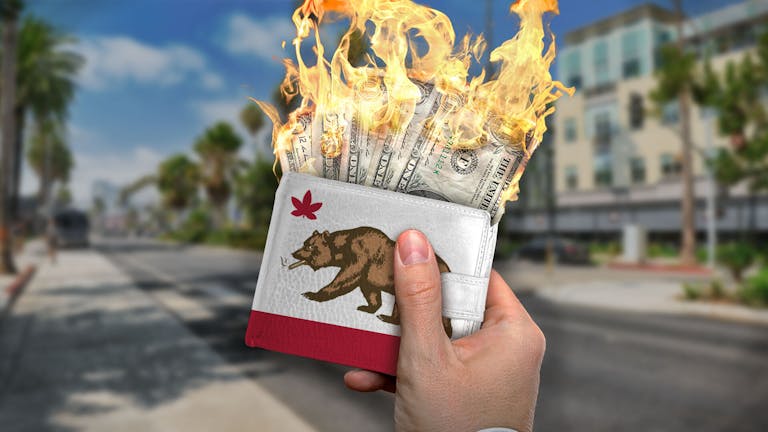America overthrew the British over some unfair taxation. Today, California cannabis consumers seem due for a mini revolt of their own.
Weed lovers can save hundreds of dollars per year on legal herb by avoiding excessive “local cannabis business taxes” in California. These complex local charges have gouged consumers at the dispensary sales counter since 2018, when the state switched over from medical marijuana to adult-use pot under Proposition 64.
Local cannabis business taxes can vary from as little as 0% to a radically unequal 15% of sales—not profits, but rather every dollar that comes in the door. That local levy gets charged after the state’s 15% cannabis excise tax, and before the state’s sales taxes of 7.5%-10.5%.
Leafly analyzed the 20 biggest cities in the state, as well as more than 20 smaller towns. We looked for the best tax bargains on legal bud. Our exclusive findings follow below.
Big cities gouging cannabis customers
California’s biggest cities are generally soaking cannabis consumers in regressive, discriminatory, confusing local weed fees.
Price and taxes are the number one consumer complaint about the legal market, said Nate Bradley, Executive Director at the Cannabis Consumer Policy Council in Sacramento, CA.
“The general consensus is extreme frustration,” Bradley told Leafly.
The worst metros for cannabis taxes
Los Angeles
Los Angeles takes a $100 bag of legal, untaxed weed and makes it $138.52 out the door—an effective 38.52% tax rate.
Shop highly rated dispensaries near you
Showing you dispensaries nearUnlike any other business type, the city of Los Angeles charges licensed pot shops a tribute of 10% gross receipts. That is 2,808 times higher than L.A.’s tax on a check-cashing business (0.000365%), for example.
Johnny Delaplane, President of the San Francisco Cannabis Retailers Alliance, said that such extreme levies have encouraged the biggest illicit cannabis market of any legal state.

“I, as a consumer, when I go buy a product and I see all those taxes piled on I’m like, ‘Oh, good Lord.’ No wonder the black market or the unregulated market or the traditional market or whatever you want to call it, it’s thriving,” said Delaplane.
Budtenders, managers, and sales receipts struggle to relay the complexity of the taxation to customers. “It creates a very unfriendly experience,” said Javier Armas, CEO of Javier’s Organics.

Oakland and San Jose
Oakland and San Jose also charge unworkable local levies. Both have a 10% local cannabis business tax on gross receipts that punishes low-income shoppers and eats up the profits of small businesses, licensees said.
“There are a lot of municipalities that are taxing their businesses out of existence,” said Delaplane. “I don’t know how anybody could survive with the 10% gross receipts tax.”
Oakland cut its 10% rate for small cannabis shops, and it’s still hundreds of times higher than any other sector, he added.
“That really hurts businesses and it just makes everyone want to cheat or leave Oakland or just really hate the system,” said Armas.
Two big cities in the middle, one surprising standout
San Francisco and Sacramento rank in the middle of the tax pack. Both have a 5% local cannabis business tax and dozens of stores to create some price competition.
The anti-weed bastion of Fresno, CA, actually offers a better local rate (4%) than the progressive metros.
There are some other, surprising details below.
Progressive politics, regressive sin taxes
The same progressive politics that made California a marijuana law reform leader have resulted in a system that discriminates against pot users with regressive customs.
These levies prop up a massive, dangerous illicit market, and offer a cautionary tale for states planning to legalize, said Bradley, a former police officer turned marijuana activist. Bradley helped campaign for Prop 64. Now he’s an advocate for weed consumers’ rights to equal access and opportunity.
“You’re going to have a hard time trying to argue the public safety benefits of closing down an unregulated industry when states that legalized can’t close down their unregulated industry because they taxed it through the roof,” he said.

California’s legal cannabis market revenue hit an estimated $3.7 billion in 2020, but the state’s illicit market is estimated to be three or four times bigger.
The Golden State kicked off global cannabis legalization in 1996 with Prop 215, a medical marijuana initiative launched out of San Francisco by LGBTQ activists and medical patients amidst the AIDS crisis. By 2008, quasi-legal medical marijuana collectives operating out of storefronts sometimes charged sales tax—but nothing more—and regularly gave away weed to the sick and dying.
New customers replace the old, infirm
Widespread support for legal marijuana, coupled with the huge unregulated medical cannabis industry, led to the passage of Prop 64 in 2016.

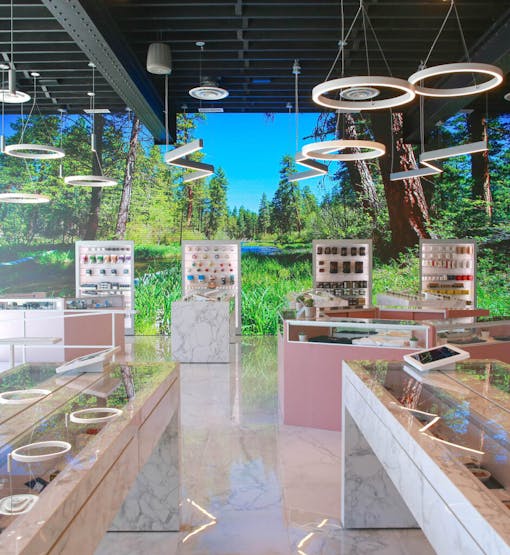
That initiative erased most marijuana crimes from the state’s legal code and replaced unregulated medical collectives with tested, and taxed, retail licensees.
The result: California’s cannabis excise tax revenues soared. Total Prop 64 state revenue hit $2.07 billion by 2020’s end, and that included $1.04 billion in excise taxes, $256.6 million in cultivation taxes, and $771.7 million in sales taxes, according to the California Department of Tax and Fee Administration.
Prop 64 also allowed cities to pass whatever local cannabis business tax they saw fit. Hoping to add more cops and teachers, localities enacted outsized weed tithes ranging from 1% to 15% of gross receipts.

Combined total tax rates of about 38% at the dispensary cash register punish the least able to afford the cost increases, according to veteran Oakland cannabis attorney James Anthony.
He said Prop 64 and its tax and dosage regulations sent regular, high-THC consumers—who are often medical patients—into the illicit market. In their place, licensed stores attracted a more monied, casual crowd for whom the extra cost covers the convenience of legality.
“It was a weird flip-flop,” he noted. “Patients went underground, and the weekend wellness user came into the stores.”
Dispensaries aren’t gouging, cities are
You might think from your weed bills that dispensaries are getting rich. In fact, they’re going broke while California governments triple-dip into cannabis users’ pockets in ways that would normally get them sued, said Bradley.
“They are clearly taking advantage,” he asserted.
Cities banging the drum about unequal opportunity also maintain some of the highest tax barriers to success, said minority equity licensee Drakari Donaldson, CEO of the California Street Cannabis Co. dispensary in San Francisco.
“The whole point of [legalization] is to right the wrongs that the War on Drugs had on minorities, and this whole tax thing, it’s not helping,” he said.
“You can’t say that you want to support social equity and then just tax them back into the Stone Age.”
Duncan Ley, co-founder, California Street Cannabis Co.
Duncan Ley, co-founder of California Street Cannabis Co., said, “You can’t say that you want to support social equity and then just tax them back into the Stone Age.”
Customer receipt shock is a rite of passage, added Ley.
“You look at a price online, or in-store, and it says $50, and you’re like, ‘Cool, I’ll take that.’ When you walk up to the register, or you go to check out, and it all of a sudden is $75, you’re like, ‘What the fuck just happened?’”
A confusing tax equation on each receipt
Here’s what happened. In California, legal cannabis consumers pay the confusing sum of:
- State excise tax: 15%
- Local cannabis business tax: Ranges from 0 – 15%, depending on jurisdiction
- State sales tax: Combination of California’s base rate, 7.25%; plus local base rate; plus district rate—which can push the state sales tax above 10%.
What does that look like on your receipt? The CDTFA provides the below formula.
$100 of legal pot, before tax, becomes:
- $115 after the 15% excise tax
- $126.50 with a local cannabis business tax of 10% applied
- $138.52 after a 9.5% sales tax is applied
So a $100 bag—which can be anywhere from 7 to 14 grams of marijuana, depending on the grade—becomes $138.52 in the city of Los Angeles.
“It’s obscene! It’s a tax, on a tax, on a tax,” said attorney Anthony, who campaigned to lower local charges in East Bay cities.
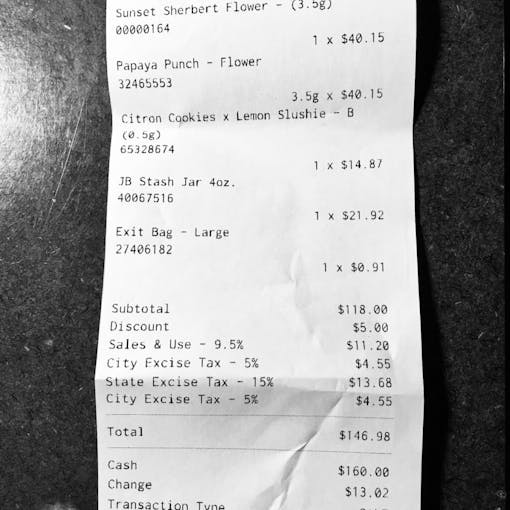
In 2021, the city of Los Angeles forecasts $128 million in local cannabis business taxes, sales taxes, and fees.
“These cities are treating cannabis businesses and customers like they are ATM machines,” said consumer advocate Bradley.
Pot tariffs add up
Leafly’s analysis found that $100 of untaxed, legal weed can sell for anywhere from $125.63 to $138.52 after those three layers of taxes are added in. Ouch.
That $13 difference may not seem like a lot, but it compounds over a year’s worth of purchases and becomes unworkable to many, especially compared to street prices.
The average daily smoker—consuming about 1.5 grams of cannabis per day—pays thousands of dollars more per year shopping legally in Los Angeles, versus an illegal shop or delivery service, which pays no duties, said Anthony.
“Spending $250 versus $500 a month—that’s a big difference.”
“Consumers really need to know how taxes work,” said Pat Oglesby, former tax attorney for the US Senate, and a cannabis tax policy expert. “If they do, for some of this stuff, they won’t sit still for.”
The best places to buy weed in California
The trick to saving the most money? Since you can’t do anything about the state cannabis excise tax (15%), or much about sales tax (7.5%-10.5%, depending on the jurisdiction), your best bet is to focus on avoiding the local cannabis business tax (0-15%).
Unincorporated Alameda County
Unincorporated Alameda County sits close to San Francisco and Oakland, but doesn’t hit consumers with the barbarous local business tolls you’ll find in the big cities. There are two dispensaries there that transitioned from the medical era to adult-use: We Are Hemp and Garden of Eden.
“We definitely get people here from all over trying to beat the tax man,” said Mace, a budtender/manager at 17-year-old We Are Hemp.
Why? Unincorporated Alameda County never got around to passing a local cannabis business tax, unlike the nearby city of Oakland, which charges 10% on gross receipts.
A $100, untaxed bag of legal pot will sell for $125.63 in unincorporated Alameda County—the best rate in the state, according to Leafly’s analysis.
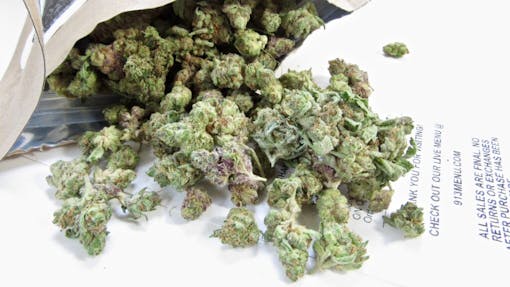
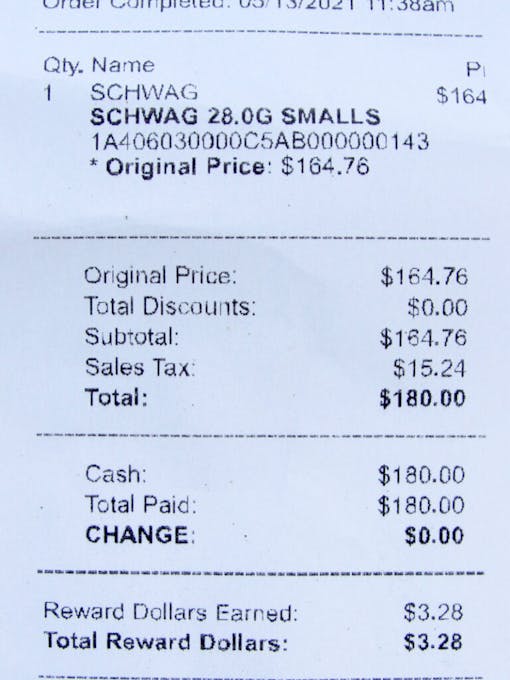
Just 100 meters off Interstate 580, plenty of street parking surrounds We Are Hemp. The legacy outlet sports two cash registers and three armed guards. And the shop advertises prices with the taxes baked in, which is called “out the door” pricing.
Leafly walked out of We Are Hemp on Thursday, May 6, with a $180 ounce of indoor smalls that smelled super dank and tested at 26.52% THC. It was the bomb.
West Sacramento, CA
The city of Sacramento combines lots of shops with a moderate amount of levies, making $100 of legal weed $131.13.
But to really pinch pennies in the suburbs, stock up in West Sacramento, where $100 of legal weed goes for $127.54 out the door at places like A Therapeutic Alternative. The local cannabis business tax (technically a “development fee”) in West Sacramento sits at 2.5% of gross receipts.
Red counties with green cities
Up next, look to typically conservative, inland counties with a small town or city that allows weed stores.
Rural counties loath government tariffs even more than the devil’s lettuce. They tend to have the lowest sales tax rates overall—Siskiyou County’s is at the bottom end of the scale at 7.5%. And even though red counties mostly ban pot shops, more little cities in red counties allow them.
We’re talking about places like Shasta Lake in rural Shasta County, or the city of Weed in rural Siskiyou County.
Buy your weed in Weed, CA

The infamously named Weed is the banner example. President Trump won Siskiyou County, which bans weed stores. But three cities in the county allow them—Mt. Shasta, Dunsmuir, and Weed—and their local weed taxes are reasonable.
Over at La Florista in Weed, $100 in untaxed legal weed will sell for $127 out the door. Weed shoppers can’t escape the 15% state excise tax in Weed. But they face a tame local cannabis business tax (3%) and a low sales tax (7.5%). The massive shop has a huge lounge and hosted a three-band block party for 4/20.
“We’re a hidden gem,” said longtime owner and community booster Elizabeth Tabor.
Yolo County
Another rural county to check out: Yolo County, where cannabis business taxes are middling (5%) and sales taxes are rock-bottom (7.25%). You should pay $129.50 out the door for $100 of herb there.
Shasta Lake, CA
You can get $100 in legal weed out the door for $130.70 in Shasta Lake, CA—a tiny city of 10,000 people in Shasta County.
Avila Beach, CA
In central California, look at shops in Avila Beach, CA, where middling local cannabis business taxes (6%) and ultra-low sales taxes (7.25%) get you $100 in legal trees for $130.73 out the door.
Hope for lifting the tax burdens?
Cities have started competing on tariffs to draw in shoppers. Berkeley halved its rate from 10% to 5% to compete with the city’s huge illicit market, as well as with neighboring Oakland.
Cannabis tax policy expert Oglesby warns that high rates will cause local consumers to drive elsewhere to purchase weed. New markets should tax low enough to attract customers and stamp out the street market.
“You can be sure that if you, the tax man, are charging more than a neighboring jurisdiction, you’re losing sales to the neighboring jurisdiction,” Oglesby explained.
“The future is more retail access, in more cities, and more competition between cities.”
James Anthony, Oakland cannabis attorney
This trend promises to continue as more cities allow licensed cannabis stores, said Bradley: “Taxes are going to go down.”
“The future is more retail access, in more cities, and more competition between cities,” added Oakland attorney Anthony.
For example, Oakland responded to better deals in Berkeley and San Francisco by keeping its local cannabis business tax rate at 10% of gross receipts but lowering the levy to 5% for stores selling less than $1.5 million in cannabis.
Armas called the reduction little comfort given the harsh fees in places like Oakland.
“It’s horrible. It’s like telling you, ‘Stay poor. No, don’t make more money.’ It just keeps this gap where then it’s very difficult to operate,” lamented Armas, the delivery service CEO and co-founder of the Bay Area Latino Cannabis Alliance.
Oakland cannabis gross receipts liabilities are 417 times higher than Oakland firearms ammunition gross receipts taxes.
“That’s fucked up,” fumed Anthony. “Who the hell taxes anything 2.5% to 5% of gross? The local business tax should be zero.”
“I would like to see billboards advertising ‘lowest taxes in the state’,” he added.
Time for consumers to flex their might
Most local cannabis business assessments are going up unless consumers vote with their feet for lower rates and pressure local officials.
In 2018, San Francisco voted to jack up its local cannabis business taxes, which threatens to bankrupt small, equity stores, said San Francisco retailer Delaplane.
In the 2020 general election, California voters approved 24 of 27 local measures taxing cannabis, setting new rates from 3% of gross receipts in Yountville to 15% in the L.A. suburb of Artesia.
The state legislature could lower the state’s cannabis excise, cultivation, or sales tax, but past efforts have failed in the one-party, Democrat-controlled state.

With dues this unjust, it’s hard to begrudge anyone staying in the illicit market.
The former cop Bradley admitted that he’s used unlicensed delivery services. “The taxes are insane. … It’s more convenient.”
“That’s a personal preference, and a lot of my friends feel that way,” said Oglesby, who co-chaired the pre-Prop 64 California Blue Ribbon Commission on marijuana legalization and founded the Center for New Revenue, a tax policy nonprofit.
You can also try and grow your own six plants per property and potentially save 90% over dispensary prices.
For licensed store shoppers, it pays to vote with your feet for lower rates. If you’re traveling down Interstate 580 in the East Bay or passing Weed, CA, or West Sacramento, stop off and scoop up the maximum legal amount (one ounce) to maximize your savings.
Second-class citizens no more
Moreover, cannabis consumers must overcome internalized stigma and assert their right to fair commerce, said Bradley. Join organizations to show strength through numbers, and call your representatives.
“We are in the post-legalization era,” Bradley said. “Cannabis consumers aren’t used to being able to just call their local councilperson because they have been criminals their entire lives just for using a damn plant.”
Voter pressure can also cut several invisible layers of taxation—like cultivation taxes, as well as the crippling Internal Revenue Service section 280E, Anthony said.
“The whole system is cockamamie and designed to fail. It’s overtaxed, overregulated, and part of that is the local tax, but not the worst part of it,” he said.
A 2020 Public Health Institute study found 23 of 28 cities that levied heavy legal cannabis taxes also gave police massive budget increases. And local cannabis taxes often get frittered away in city general fund budgets.

No other local industry faces gross receipt tax liabilities higher than around 0.1%, Delaplane said.
“We’re essential businesses,” added Delaplane, “but we’re still not being treated equally. How can my business that’s essential be taxed at 50 times a higher rate than another business that maybe wasn’t essential and didn’t have its frontline workers working through a pandemic?”
Other states are running different experiments
Look to other states for better models. Oregon caps local retail cannabis taxes at 3%.
“Every jurisdiction approved their measure,” said Oglesby. “It’s like 100 to 0 up there. ‘Yeah, we’ll tax it. We’ll take our 3%.’”
The Beaver State’s mature weed industry offers eighth-ounces for as low as $6.00. Not $60—$6.
Ironically, La Florista in Weed, CA, boasts some of the best rates in the state, but their customers are mostly Oregon tourists used to far lower prices.
“All they do is bitch at me about how cheap it is in Oregon. I hear that every day,” sighed the owner, Tabor.
Another example: The regulation-hating, red Trump state of Oklahoma offers better medical cannabis access and opportunity than California, said patient activist David Goldman. Goldman is the president of the Brownie Mary Democratic Club in San Francisco.
“They made it a free market,” he said. “It’s explosive.”
Equity stores’ time running out
Without consumer pressure for relief, small stores will bleed red ink each year, and the wealthy will buy up shop licenses at a discount.
Oglesby suggested California—flush with a $76 billion budget surplus—could rebate local levies back to equity licensees.
“Hell, you don’t need the damn money,” he said. “Have the state cover the local tax. It’s simple. Go get a politician who says, ‘That makes sense. Let’s do it.’”
Duncan Ley, at California Street Cannabis Co., bluntly asserted: “California needs to figure its shit out, and the local localities need to support their businesses. And if they really want to be true to the social equity thing then they have to understand the taxes, or they’re just paying lip service to it.”
Most folks don’t know that federal weed prohibition started in the 1930s with a grass tax too high to pay.
Armas explained, “If we got all the equity folks to be like, ‘Taxes and the War on Drugs are interconnected,’ you know, really make that connection, and basically make fighting taxes cool, for lack of a better term, we could have a real movement as opposed to just complaining about it.”
